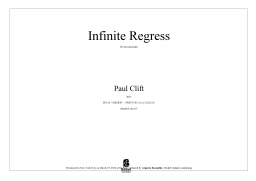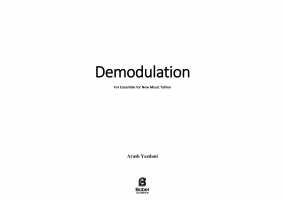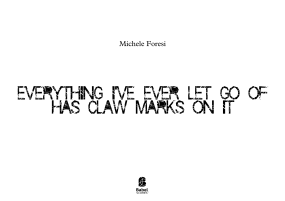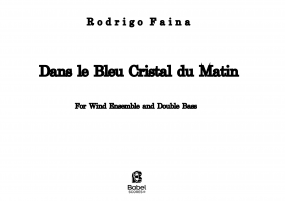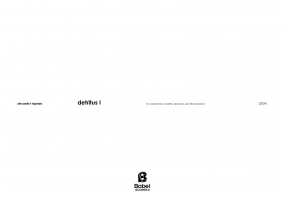Epic Abrasion
for flute, oboe, bass clarinet, percussion, piano, violin, viola, and cello.
9,79 €
Version numérique (+0,00 €) à télécharger
Version papier (+16,20 € impression et livraison ). Colissimo7-14 days aprox.
Chez BabelScores, quand vous achetez une partition, vous pouvez ensuite contacter directement le compositeur ici même !
Caractéristiques
Region
Europe
Estimated Duration
6 - 10min
Date
2010
ISMN : 979-0-2325-0041-6
In Stock
Notes sur cette pièce “Friction” and “interaction” are the central ideas of epic abrasion. Friction represents the resistance of two surfaces scraping each other and the tension between contrasting musical materials. A sense of friction also occurs when the relation between the performance effort and the audible outcome are unbalanced. The interaction within the ensemble resembles a group dialogue in every day life, where the focus is constantly shifting among the participants. Everyone can be active independently at the same time, but they can also form different groups opposing each other or a few active participants can be exchanging intensely while the others are passively present.Throughout the work, just as in life, interaction is developed and kept alive by the notion of friction. The friction can appear in different forms, such as unspoken expectation, thoughts that are presented verbally but only reveal a fraction of its original meaning, or extreme outbursts of anger suppressed by conversation etiquette. While exploring the musical friction, each instrumental voice inhibits a role, just as an actor in a play would elaborate with different levels of expression.Friction, as musical material, ranges from the barely audible frictionless sounds such as long streams of air through the wind instruments and light scratches of a metal bowl rim, to the strong friction based musical materials such as the heavy scratch noises in the strings and the rattling timbre of the prepared piano in the lowest register.The blackboard manifests the synergy of friction and interaction by acting both as a messenger and a sound object during the piece. The percussionist, functioning as a “filter”, interprets the noise from the performance space as well as the other musicians’ playing, and creates messages on the blackboard. These are instantly interpreted by the ensemble in an ongoing, circular feed back dialogue. As a contrast, strict notation is used in other sections of the piece to focus on instants of abrasion and develop them into longer sequences of obstinate dialogues, perceived in the relief of layered timbres with shifting intensity.
Ajouter à une playlist
- Identifiez-vous pour créer une liste
Instrumentation
Flute|Oboe|Bass Clarinet|Percussions|Piano|Violin|Viola |Cello
Score Details
Format - A3 / Tabloid
Pages - 34
Pages - 34






